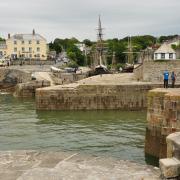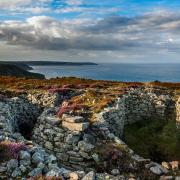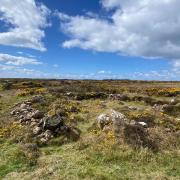A survey at Castilly Henge has revealed a deeper history.
New research by Historic England and the Cornwall Archaeology Unit (CAU) has revealed a previously unknown stone circle inside Castilly Henge near Bodmin.
The first modern archaeological surveys of Castilly Henge near Bodmin have been carried out as part of a project to conserve and better understand the site.
Castilly Henge is believed to have been built during the late Neolithic period (c. 3,000 – 2,500 BC). Defined by an external bank and an internal ditch, it would have formed an amphitheatre-like setting for gatherings and ritual activities. Previous researchers have suggested that the site was used as a theatre (Playing Place or plen-an-guary) in the Middle Ages, and then as a battery during the English Civil War.

The opportunity to apply modern survey methods to this intriguing monument arose in 2021, when it was included in a Monument Management Scheme (MMS), a partnership between Historic England and the CAU to conserve and repair monuments on Historic England’s Heritage at Risk Register.
Volunteers coordinated by the CAU cleared the site of vegetation which threatened below-ground archaeological deposits. This work enabled teams from Historic England to carry out the first detailed topographic and geophysical surveys of Castilly Henge.
The surveys, which will be detailed in a Historic England report released later this year, revealed traces of a long-buried stone circle in the centre of the henge, making this only the second henge with a stone circle in Cornwall.
Ann Preston-Jones, Heritage at Risk Project Officer at Historic England, said:
“The research at Castilly Henge has given us a deeper understanding of the complexity of this site and its importance to Cornish history over thousands of years. It will help us make decisions about the way the monument is managed and presented, so that it can be enjoyed by generations to come.”
Want more from Cornwall Life?
Check out:
- The most magical castles and ruins in Cornwall
- The musician fighting to keep the Cornish language alive
- Incredible Shackleton exhibition comes to Cornwall
You can also subscribe to Cornwall Life Magazine for more amazing and exclusive content here, or sign up for our newsletter here.




























